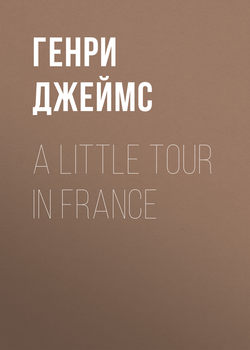Читать книгу A Little Tour in France - Генри Джеймс, Henry Foss James - Страница 9
VIII
ОглавлениеWithout fastidiousness, it was fair to declare, on the other hand, that the little inn at Azay-le-Rideau was very bad. It was terribly dirty, and it was in charge of a fat megere whom the appearance of four trustful travellers – we were four, with an illustrious fourth, on that occasion – roused apparently to fury. I attached great importance to this incongruous hostess, for she uttered the only uncivil words I heard spoken (in connection with any business of my own) during a tour of some six weeks in France. Breakfast not at Azay-le-Rideau, therefore, too trustful traveller; or if you do so, be either very meek or very bold. Breakfast not, save under stress of circumstance; but let no circumstance whatever prevent you from going to see the admirable chateau, which is almost a rival of Chenonceaux. The village lies close to the gates, though after you pass these gates you leave it well behind. A little avenue, as at Chenonceaux, leads to the house, making a pretty vista as you approach the sculptured doorway. Azay is a most perfect and beautiful thing; I should place it third in any list of the great houses of this part of France in which these houses should be ranked according to charm. For beauty of detail it comes after Blois and Chenon- ceaux; but it comes before Amboise and Chambord. On the other hand, of course, it is inferior in majesty to either of these vast structures. Like Chenonceaux, it is a watery place, though it is more meagrely moated than the little chateau on the Cher. It consists of a large square corps de logis, with a round tower at each angle, rising out of a somewhat too slumberous pond. The water – the water of the Indre – sur- rounds it, but it is only on one side that it bathes its feet in the moat. On one of the others there is a little terrace, treated as a garden, and in front there is a wide court, formed by a wing which, on the right, comes forward. This front, covered with sculptures, is of the richest, stateliest effect. The court is ap- proachcd by a bridge over the pond, and the house would reflect itself in this wealth of water if the water were a trifle less opaque. But there is a certain stagnation – it affects more senses than one – about the picturesque pools of Azay. On the hither side of the bridge is a garden, overshadowed by fine old sycamores, – a garden shut in by greenhouses and by a fine last-century gateway, flanked with twin lodges. Beyond the chateau and the standing waters behind it is a so-called parc
